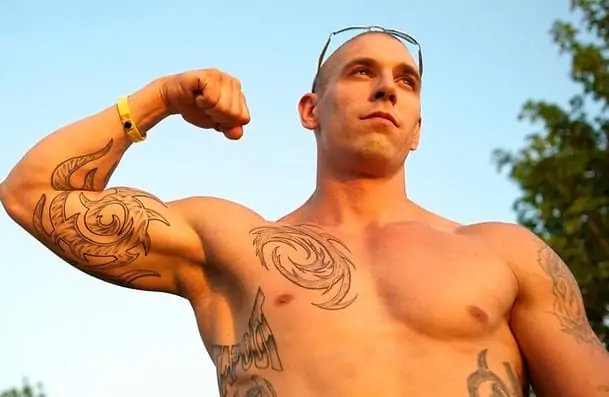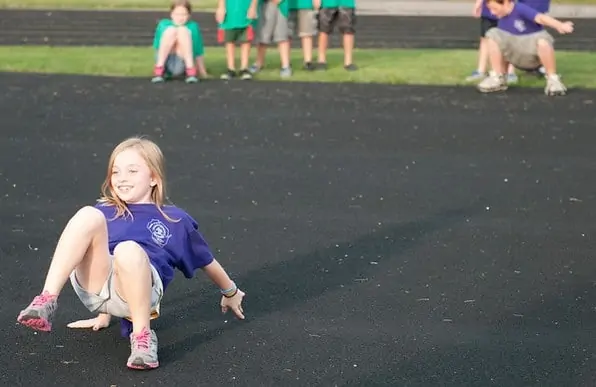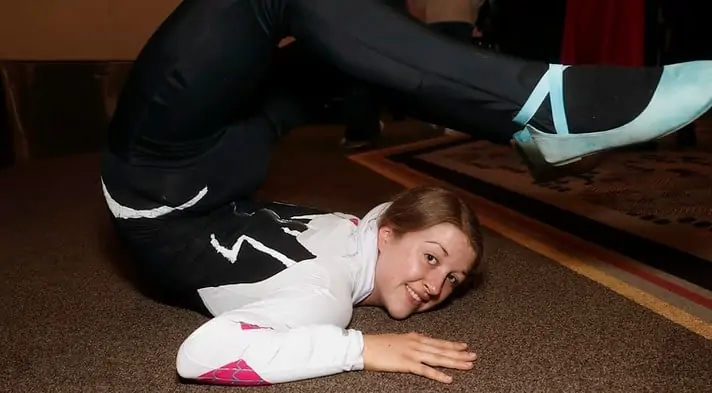The crab walk is a great exercise that will work out your entire body and it’s one you will remember doing while in elementary school. It doesn’t require any equipment to perform and it’s an exercise that you can do at any location. You’re supposed to balance your own weight using your hands and legs and leave your hips out of it. While you might not think about the crab walk being a legitimate exercise, there are many benefits of this fun and unique exercise we wanted to tell you about.
How to Do the Traditional Crab Walk
As you can see in the photo, it’s easy to do the crab walk anywhere including outdoors in the sand. Crab Walk by Russ/ CC BY-NC-ND 2.0
- You need to sit down on the ground and then bend your knees so that your feet are on the ground.
- Ensure that the soles of your feet are on the ground and that your feet line up with your hips.
- Lift up your hips using both your core muscles and your glutes. You should be in a tabletop-looking position.
- You should have only the soles of your feet and your palms touching the ground at this point.
- Continuing to lift your hips you will want to take your right foot and move forward along with your left hand.
- Step forward now with your right hand and left food.
- The main key to successfully pulling off this exercise is to remember it’s a cross-crawl type of pattern. This means right foot moving with your left hand and left foot moving with your right hand.
- Take 15 steps and then reverse your movement so that you are back in position where you started.
This video shows how easy it is to perform the crab walk and the importance of keeping your torso and hips up as you begin the movements. You can see from the video the correct position and how this movement will engage your entire body.
Tips for a Successful Crab Walk
- Don’t allow your feet to get too far in front of you or try to move them too quickly as this could cause injury to your upper body. The shoulders are the most at risk for injury if you try to move too quickly.
- In order to ensure your back stays injury-free, you want to have your palms behind you on the ground at all times and ensure your feet are correctly hip-width apart.
- Start off doing the crab walk slowly and then build up to a quicker movement. It might take you a few times to find the speed that is right for you. You can challenge yourself by increasing the speed slightly each week.
What Muscles are Worked During the Crab Walk?
Triceps– The triceps are found on the upper arm in the back and extend your arm at your elbow. They are also important for rotating your arm and it’s one of the most important muscles for the crab walk.
Glutes- Your glutes get a great workout from crab walking and these are better known as your butt muscles. The glutes consists of your gluteus medius, gluteus maximus, and gluteus minimus. These muscles are important for helping lift your legs to the side and allows you to rotate your legs. The glutes will help stabilize your pelvis while also extending your hips.
Hamstrings- The hamstrings can be found on the back side of your upper leg and they are right below the glutes. This muscle allows you to flex your knees, extend your hips, and also allows for your legs to rotate.
Rectus Abdominis- This muscle is known as the six-pack and it’s important for generating abdominal pressure and it also helps flex your torso. Core strength training can also help you improve and strengthen your torso muscles.
Calves- The crab walk is great at working out your calves and it will allow the soleus muscle to work properly during this exercise. The soleus muscle is what allows you to point your toes when your knees are bent at that 90 degree angle.
If you crab walk regularly, you’ll be able to get toned shoulder muscles including your pectorals. #33 – Tatooed Muscle by Elvis Kennedy/ CC BY-NC-ND 2.0
Front Shoulders, lats, and pectoral- All of these muscles will work in unison so that your shoulder is stabilized while you crab walk. These are going to be the muscles that you’ll notice are vital for performing the crab walk correctly, and this is often where soreness will be after the workout.
Quadriceps- When you perform this exercise you’re working out your quadriceps, which can be found on the top part of your leg. There are four muscles within the quadriceps including the vastus lateralis, the vastus medialis, the vastus intermedius, and the rectus femoris. All of these muscles allow you to extend your knee when they engage at the same time.
How the Crab Walk Benefits You
A girl is learning how to do the crab walk and seems to be having fun. 130809-Z-BW457-019 by Wisconsin National Guard/ CC BY-NC-ND 2.0
Increases Upper-Body Strength
The crab walk will increase your upper-body strength and it will do so within the first attempt at this nostalgic exercise. You’ll quickly notice that your arms begin shaking which is a good sign. While performing the crab walk you’re going to also notice that your forearms and back are getting a fairly decent workout. Since the exercise utilizes your glutes, shoulders, arms, hamstrings, and quadriceps it’s an entire upper-body workout routine.
Improves Balance & Coordination
This exercise is going to improve your balance and coordination and that’s a huge benefit if you’re an active person and want to hone skills in a particular sport. Even if you’re not into other sports, improvements in coordination and balance are important to help prevent injuries in everyday life. You’ll also notice that your posture has improved with this exercise. It will also help improve your focus and concentration since you’re moving different parts of your body at the same time.
You’re Going to Burn More Calories
The crab walk is considered a total-body exercise which means that you’re going to be using the muscles from your shoulders on down. With total-body workouts and movements, you need more oxygen to perform the exercise. This means that you’re burning more calories with each passing minute. Since this exercise is supposed to be performed in a quick movement, it’s great for cardiovascular health and helps increase metabolism. Isolated movements and exercises require only a small amount of oxygen since it’s focused on one certain type of movement. By doing this exercise you’ll notice that you can burn more calories and strengthen your muscles in less time.
Crab Walk Enhances Flexibility
The picture shows just how flexible you can get if you practice the crab walk regularly. Dancers can use this exercise to improve coordination and flexibility. A very flexibile Spider-Gwen by Greyloch/ CC BY-NC-ND 2.0
If you want to become more flexible but don’t want to get into yoga, then just do the crab walk several times a week and you’re going to become more flexible. Flexibility is important to prevent common injuries and it’s also great for circulation and overall cardiovascular health. Your joints are also going to be thanking you since flexibility helps keep your joints healthy and moving correctly.
You Don’t Have to Use Weights to Build Strength
When people decide to begin strength-training or think of building strength at home they often get frustrated thinking about all of the weights they’ll have to purchase. A crab walk is considered a strength-training exercise but you’re not going to have to purchase any weights to get the benefit. It’s great for those in locations where having a set of weights just isn’t possible. Since this exercise uses your whole body during the movements that becomes the resistance you need to build muscle strength.
Image: Seal Training Adventures by Arnar Valdimarsson/ CC BY-NC-ND 2.0

Jacky has a degree in Sports Science and is a Certified Sports and Conditioning Coach. He has also worked with clients around the world as a personal trainer.
He has been fortunate enough to work with a wide range of people from very different ends of the fitness spectrum. Through promoting positive health changes with diet and exercise, he has helped patients recover from aging-related and other otherwise debilitating diseases.
He spends most of his time these days writing fitness-related content of some form or another. He still likes to work with people on a one-to-one basis – he just doesn’t get up at 5am to see clients anymore.




